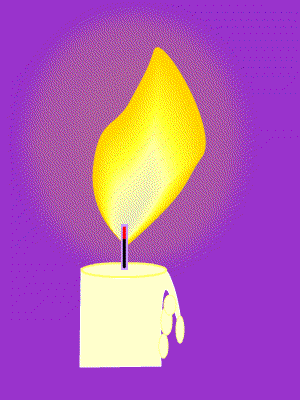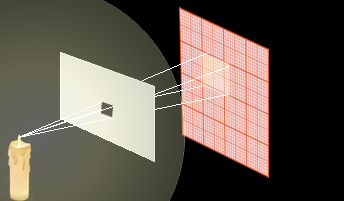Inverse Square Law Experiment Why does the world get dark so quickly as you move away from the circle of light from a campfire? We all know
that a light, such as a candle or a streetlight, looks dimmer the
farther away from it we get.
The question
of how much dimmer it looks was answered a long time ago. Here's a simple
experiment you can perform to repeat that discovery.
Requirements:
Unscrew the front reflector assembly of the torch to expose the bulb. The bulb on the torch will come on and stay on even when the reflector assembly is removed.
Now cut a l/2 x 1/2 inch (1.3 x 1.3 cm) square hole in the file card. Hold or mount the card 1 inch (2.5 cm) in front of the light source. The square of light made when the light shines through this hole will shine on the graph paper. Keep the distance between the bulb and the card with the square hole constant at 1 inch (2.5 cm). Put the graph paper at different distances from the bulb, and count how many squares on the graph paper are lit at each distance. The results will be easier to understand if you make a table of "number of squares lit" versus "distance." Be sure to measure the distance from the bulb. |
Follow me...
|








